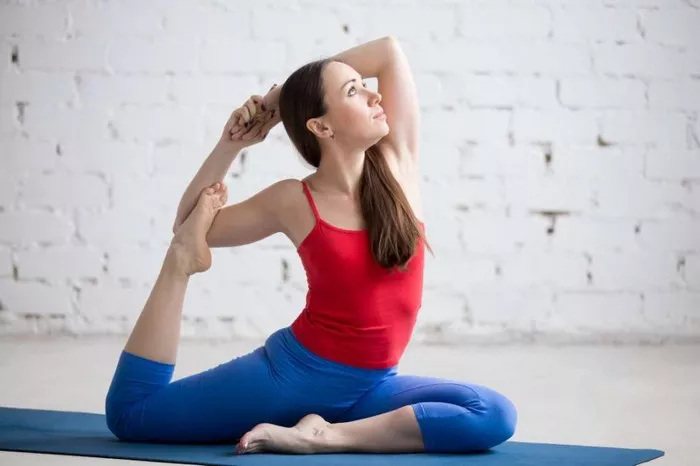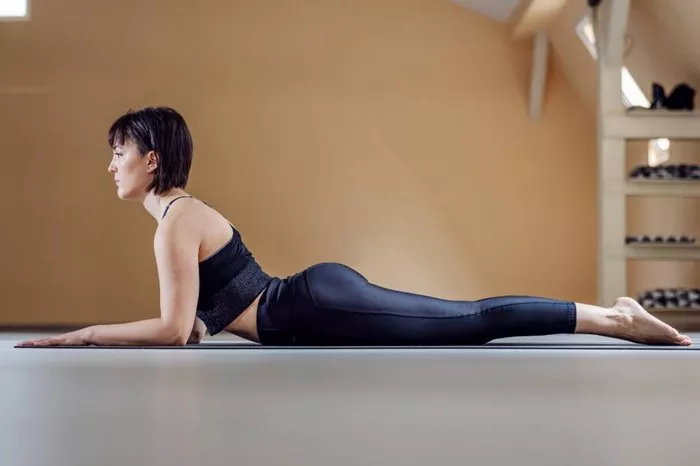Standing yoga poses form the foundation of many yoga practices, often providing a stable base that allows the practitioner to cultivate strength, balance, flexibility, and focus. Whether you are a seasoned practitioner or a beginner, these poses are crucial for developing both the physical and mental benefits that yoga offers. In this article, we will delve into the various benefits of standing yoga poses, explore their anatomical and physiological effects, and provide insight into how they contribute to a well-rounded yoga practice.
1. Introduction to Standing Yoga Poses
Standing poses, also referred to as “Prone” poses or “Weight-Bearing” poses, involve standing with your feet on the ground and engaging various muscle groups in the legs, core, and upper body. These poses include popular asanas such as Tadasana (Mountain Pose), Virabhadrasana (Warrior Poses), Trikonasana (Triangle Pose), and Utthita Parsvakonasana (Extended Side Angle Pose). They are often practiced in yoga flows, vinyasa sequences, and alignment-based yoga styles such as Hatha and Iyengar.
The key feature of standing poses is their ability to challenge balance and coordination while encouraging strength and alignment. Standing poses may seem simple at first glance, but they require conscious attention to body alignment, breath control, and engagement of muscles in both the legs and core.
2. Physical Benefits of Standing Yoga Poses
Standing yoga poses offer numerous physical benefits that help to promote strength, flexibility, and stability. Here are some of the most significant physical advantages:
Improved Lower Body Strength
One of the most notable physical benefits of standing poses is the strengthening of the muscles in the legs, including the quadriceps, hamstrings, calves, and glutes. Poses like Warrior I (Virabhadrasana I) and Warrior II (Virabhadrasana II) require deep engagement of the legs and lower body muscles to maintain balance and stability. By holding these poses for an extended period, practitioners can increase muscle endurance and overall leg strength.
In addition to strengthening the legs, standing poses also help activate the hip flexors, adductors (inner thigh muscles), and abductors (outer thigh muscles), leading to greater mobility and functional strength in the hips.
Enhanced Balance and Coordination
Standing yoga poses play a key role in developing balance and coordination, as they demand full-body integration to maintain proper alignment and stability. Poses like Tree Pose (Vrikshasana) and Warrior III (Virabhadrasana III) are excellent for improving balance by challenging the body’s ability to stay steady on one leg.
By practicing these poses regularly, practitioners enhance proprioception (the body’s awareness of its position in space) and dynamic stability. This leads to greater coordination between different muscle groups, improving overall functional movement patterns.
Core Engagement and Stability
Core strength is essential for supporting the spine and maintaining good posture. Standing poses, particularly those that require a deep bend or lateral extension of the body, are excellent for engaging the abdominal muscles. Poses such as Extended Side Angle Pose (Utthita Parsvakonasana) and Triangle Pose (Trikonasana) help strengthen the obliques, transverse abdominis, and rectus abdominis (the “six-pack” muscles), which in turn improve overall core stability.
A strong core not only provides support for the lower back and spine but also enhances the efficiency of movements in other parts of the body. Whether you’re lifting objects or simply walking, core strength plays a critical role in maintaining fluidity and reducing the risk of injury.
Improved Flexibility
While standing poses are primarily focused on strength and stability, many of them also contribute significantly to improving flexibility. For example, poses like Wide-Legged Forward Fold (Prasarita Padottanasana) and Triangle Pose (Trikonasana) stretch the hamstrings, hips, and lower back. These stretches help lengthen the muscles and improve overall flexibility.
Standing poses also promote flexibility in the hips and shoulders, particularly when the arms are extended overhead or when twisting the torso. This flexibility not only increases range of motion but also helps to alleviate tension and stiffness in areas of the body that are prone to tightness, such as the back and hips.
Better Posture
Regular practice of standing poses promotes better posture by encouraging proper alignment of the spine, pelvis, and shoulders. For instance, poses like Mountain Pose (Tadasana) teach alignment by engaging the muscles of the feet, legs, and core to create a strong and stable foundation. This helps prevent slouching and encourages the natural curves of the spine to be maintained.
Furthermore, standing poses promote awareness of body mechanics, allowing practitioners to develop an understanding of how to move efficiently and with greater alignment. This awareness carries over into daily life, helping to reduce the risk of poor posture habits and musculoskeletal strain.
Increased Circulation and Joint Health
Standing poses help to stimulate blood flow and improve circulation throughout the body. By engaging large muscle groups, such as the legs and core, the heart has to pump blood more efficiently, promoting cardiovascular health. Additionally, standing poses that require deep bends or stretches, such as Warrior II (Virabhadrasana II), encourage joint mobility and flexibility, particularly in the knees, hips, and ankles.
This increased circulation helps to bring oxygen and nutrients to tissues, promoting recovery and reducing stiffness in the joints. As standing poses require weight-bearing activity, they are also beneficial for bone density, helping to prevent osteoporosis and other age-related conditions that affect bone strength.
3. Mental and Emotional Benefits of Standing Yoga Poses
In addition to their physical benefits, standing yoga poses offer a range of mental and emotional benefits. These poses are often seen as opportunities to cultivate focus, mindfulness, and emotional resilience. Here are some of the key mental and emotional benefits:
Cultivating Focus and Mindfulness
Standing yoga poses require attention to detail, as they demand that practitioners focus on the alignment of the body, the engagement of muscles, and the flow of breath. By practicing mindfulness in these poses, individuals can develop a greater sense of awareness of their bodies and their surroundings.
For instance, in poses like Warrior I (Virabhadrasana I) or Tree Pose (Vrikshasana), the practitioner must balance and stabilize their body, which encourages a deeper sense of presence and concentration. This focus on the present moment cultivates mindfulness, which is the foundation of many meditation practices.
Building Resilience and Mental Strength
Standing poses often challenge the practitioner to hold the pose for an extended period, pushing the limits of endurance. These challenges can be mentally taxing, but they also build resilience and mental strength. Poses such as Warrior III (Virabhadrasana III) require both physical and mental fortitude to maintain balance and stability. Over time, holding these poses helps to build perseverance and an inner sense of strength, both on and off the mat.
The ability to stay present and calm in difficult poses translates into the ability to handle challenging situations in daily life. This mental resilience helps to foster a sense of emotional well-being and can reduce feelings of stress or anxiety.
Stress Relief and Emotional Balance
The grounding nature of standing poses can be incredibly beneficial for reducing stress and anxiety. By focusing on the breath and maintaining a stable posture, practitioners can activate the parasympathetic nervous system (the “rest and digest” system), which counteracts the stress response and promotes relaxation.
In poses like Mountain Pose (Tadasana) and Warrior II (Virabhadrasana II), practitioners are encouraged to create a sense of rooting down into the earth, which can have a calming and stabilizing effect on the mind. This connection with the earth fosters a sense of emotional balance and helps to reduce feelings of overwhelm or agitation.
Empowerment and Confidence
Many standing poses, particularly the warrior poses, are associated with strength and empowerment. These poses open the chest and encourage a sense of boldness and confidence. By embodying the qualities of strength, stability, and focus, practitioners can develop a greater sense of self-esteem and personal empowerment.
Over time, the physical strength and confidence cultivated through standing poses can translate into improved self-image and a more positive outlook on life. Standing poses also promote an open heart and a sense of connection to one’s body, leading to greater emotional health and well-being.
4. How to Maximize the Benefits of Standing Poses
To fully experience the benefits of standing yoga poses, it’s important to practice them with awareness and intentionality. Here are a few tips to help you get the most out of your standing poses:
Focus on Alignment
Proper alignment is key to avoiding injury and maximizing the benefits of any yoga pose. In standing poses, pay attention to the positioning of your feet, knees, hips, shoulders, and head. For example, in Warrior II (Virabhadrasana II), ensure that your front knee is aligned over your ankle and your back leg is straight and strong. This alignment ensures that you are using your muscles efficiently and safely.
Engage Your Core
Incorporating core engagement into your standing poses will not only enhance stability but also improve strength and posture. Activate the muscles of your abdomen by gently drawing the navel toward the spine, which will support your back and help prevent over-arch.
Maintain a Steady Breath
Breath control, or pranayama, is an integral part of yoga practice. In standing poses, maintain a steady, deep breath to help support your body and mind. Use your breath to create length and space in your body, and to help you stay focused and calm throughout your practice.
Practice with Mindfulness
Finally, approach each standing pose with mindfulness and awareness. Pay attention to how your body feels in each posture, and use each breath as an opportunity to connect more deeply with your body. The mental benefits of standing poses are just as important as the physical benefits, so take time to cultivate a sense of presence and connection in each moment.
Conclusion
Standing yoga poses are an essential part of any yoga practice, providing a solid foundation for physical and mental health. From strengthening the legs and core to improving balance, flexibility, and posture, the benefits of standing poses are vast and far-reaching. In addition to their physical advantages, standing poses also offer mental and emotional benefits, including enhanced focus, stress relief, and greater self-confidence.
Whether you are practicing for physical fitness, mental clarity, or emotional well-being, standing yoga poses are an invaluable tool in your yoga practice. With consistent practice, you will notice improvements in your body, mind, and spirit, leading to a more balanced and empowered life.
Related Topics:























